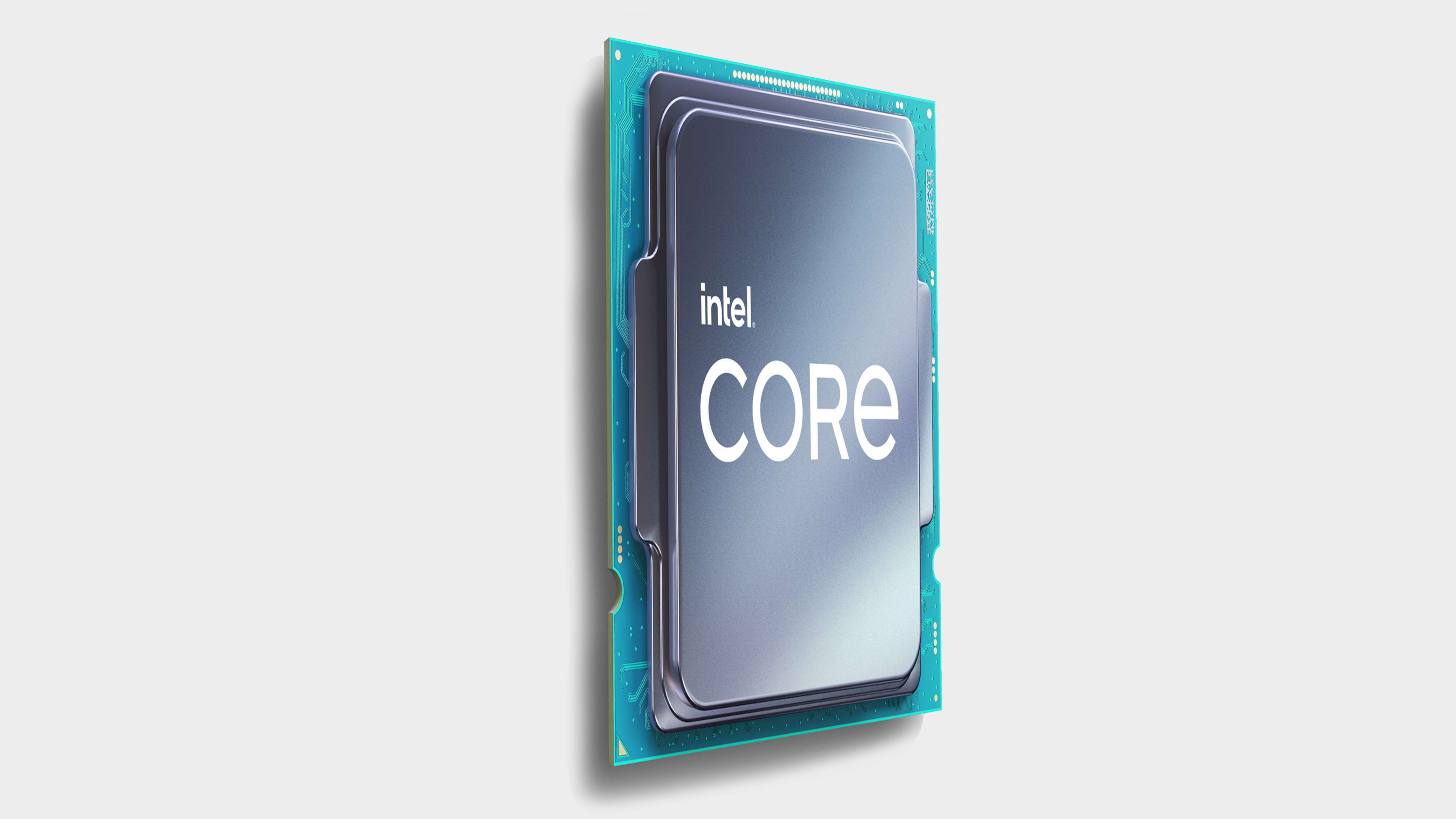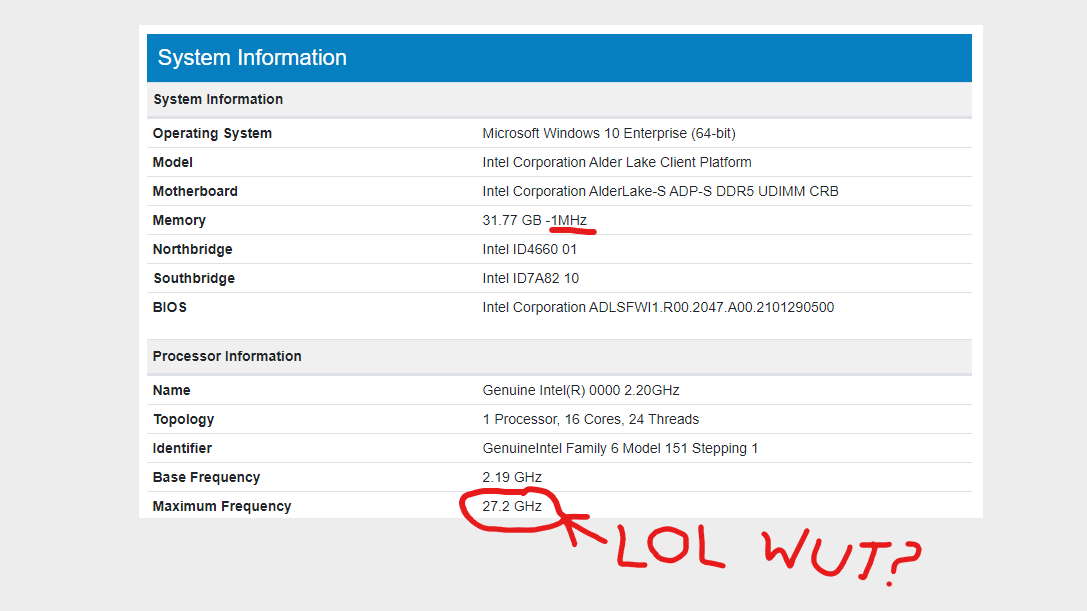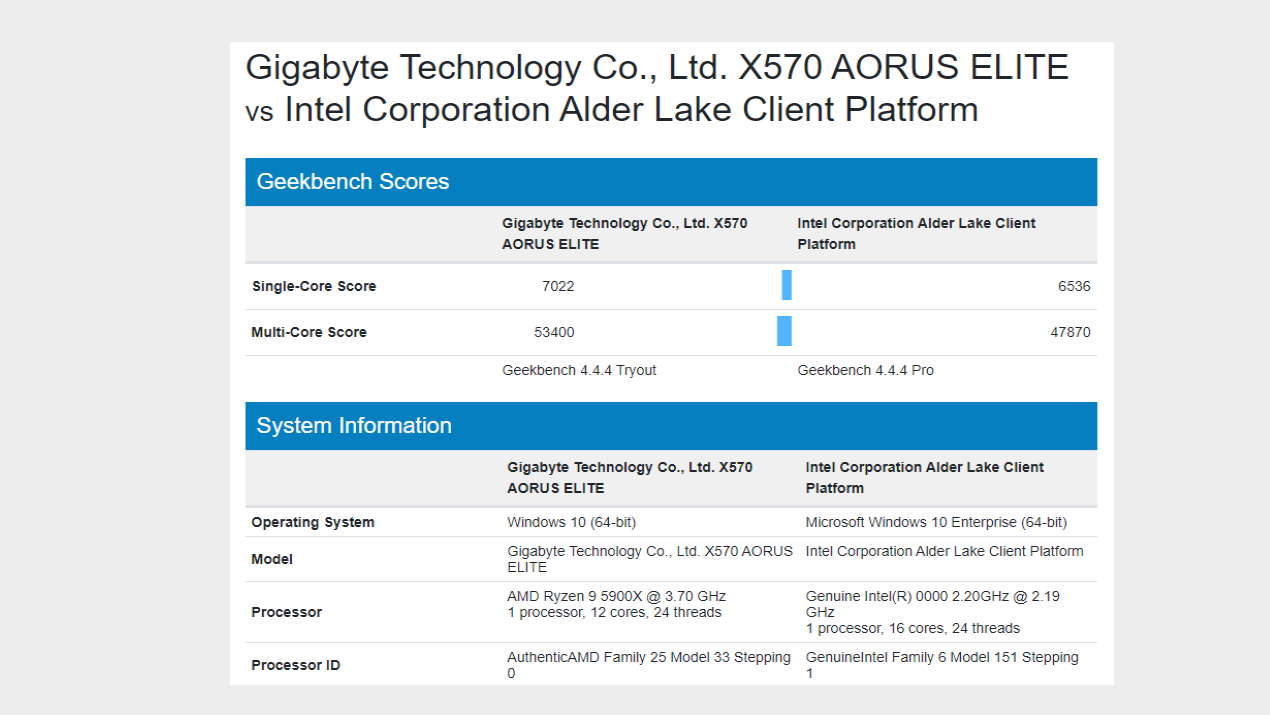Either Intel's new Alder Lake CPU runs at over 27GHz or the latest benchmark leak is a little off
Looks like AMD could be in trouble... unless Geekbench is being flaky. Yeah, Geekbench is probably being flaky.

The latest leaked Intel Alder Lake benchmarks demonstrate that AMD is going to be in big trouble when the next-gen architecture launches, potentially in September this year. Either that, or benchmarking tool Geekbench is getting all kinds of confused about the big.LITTLE chip design and the 27.2GHz maximum CPU frequency it's reporting is an error.
Yeah, I'm betting it's the latter, too, but just imagine the cooler and PSU you'd have to attach to the chip in order to hit those heights. Maybe Intel's plumbed the Alder Lake test platform into its air conditioning unit… the company has precedent there.
Otherwise, the Geekbench 4 results don't look too exciting, with the AMD Ryzen 9 5900X offering higher single and multi-core numbers. But this isn't a final retail chip, and has the potential to improve. The super-low DDR5 memory clock speed might be to blame.
It all seems a bit of a mismatch to me, but maybe that's why I'm not testing pre-production processor samples for Intel. To me, sticking 32GB of unreleased DDR5 memory into an Alder Lake test rig makes sense, but running at just 1MHz seems downright miserly.
I guess all the system cooling has gone into getting the CPU up to 27.2GHz.
Whatever the vagaries of the specs Geekbench has pooled together, or the efficacy of the benchmark itself, it's still good news that early Alder Lake engineering samples—especially the top 16-core, 24-thread chips—are going under the benchmark microscope. We know external test samples have started going out into the wider industry, so it looks like Intel is definitely on track to ship this exciting, potentially spectacular, potentially catastrophic processor design this year.


The Intel Alder Lake platform is the big chip maker's 'next big thing', a CPU generation which promises to deliver a potentially risky new processor architecture in a bid to wrest back control of the CPU market from a currently dominant AMD.
Keep up to date with the most important stories and the best deals, as picked by the PC Gamer team.
The red team has picked the cheaper chiplet technology to allow it to jam together a huge number of cores into a traditional processor package, with its 16-core, 32-thread AMD Ryzen 9 5950X fitting in the same size packaging as the company's first true dual-core CPU from 2005.
Intel has instead chosen to go for the same big.LITTLE chip design as it used with the Lakefield mobile processors last year.
The concept pairs a number of high-performance cores with lower-performance options to balance power demands and broad multi-core prowess. It's normally seen as a chip design that makes sense in mobile silicon, but its use in a desktop chip is what has a lot of us scratching our heads.
With Alder Lake, only the big Golden Cove cores get HyperThreading while the Gracemont Atom cores don't, which is where the different between core and thread-counts occur in the specs. That at least Geekbench hasn't gotten wrong.
Alder Lake, however, won't come fitting in the same scale chip as Intel's 2005 Pentium, with the new platform demanding an oblong shape and an LGA 1700 CPU socket. These Alder Lake motherboards are going to come big, and the Mini-ITX versions are going to look weird.
Thanks, HotHardware.

Dave has been gaming since the days of Zaxxon and Lady Bug on the Colecovision, and code books for the Commodore Vic 20 (Death Race 2000!). He built his first gaming PC at the tender age of 16, and finally finished bug-fixing the Cyrix-based system around a year later. When he dropped it out of the window. He first started writing for Official PlayStation Magazine and Xbox World many decades ago, then moved onto PC Format full-time, then PC Gamer, TechRadar, and T3 among others. Now he's back, writing about the nightmarish graphics card market, CPUs with more cores than sense, gaming laptops hotter than the sun, and SSDs more capacious than a Cybertruck.

